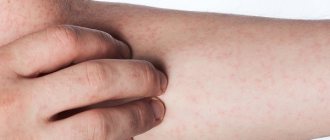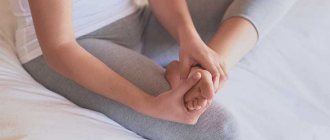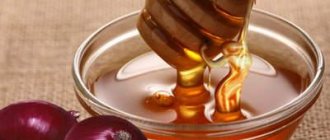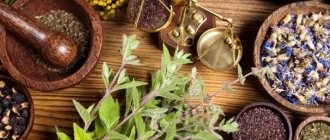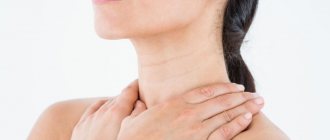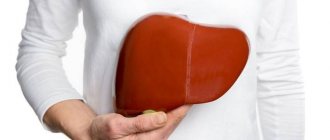Treatment of itching with celandine
Celandine in the form of tincture and decoction for external use is an effective remedy against itching and skin rashes. To prepare the decoction, you need to take a teaspoon of plant material (dried celandine can be purchased at the pharmacy) and pour a glass of boiling water. Leave for fifteen minutes and strain through cheesecloth. The resulting decoction can be used to wipe the affected areas of the skin or make compresses.
A thick infusion of celandine is used for baths. It is prepared based on the proportion of 10 grams of dry plant per 100 grams of hot water. The mixture is cooled to a temperature of 36-40 °C and baths are made for 10-15 minutes.
An alcohol tincture for rubbing is prepared from one part of a crushed plant to five parts of vodka. To use the tincture as a compress, soak gauze and apply it to the affected areas for 15-20 minutes. To avoid skin irritation, the tincture can be diluted with boiled water.
Read more: Properties, application and treatment of celandine
Herbal folk remedies for allergies and red spots on the skin
Skin itching, burning, redness, swelling are the external manifestations of an allergic reaction.
Around the world, about 40% of adults and children suffer from allergies. Today, pharmacies sell dozens of types of antiallergic drugs in various forms of release.
However, traditional medicine can also offer many effective and safe ways to get rid of an allergic reaction at home.
Herbs for allergies for children and adults
Medicinal herbs act gently and help eliminate allergy symptoms quickly and without side effects.
Chamomile for red spots
Dried chamomile flowers are used to make lotions for affected areas of the skin, and also prepare medicinal infusions for oral administration.
How to make lotions:
- 3 tbsp. l. dry flowers, pour a small amount of hot water and stir. Let it brew for a few minutes.
- Wrap the warm pulp in gauze and apply to the irritation, secure with a bandage.
- After 2 hours, remove the bandage.
The procedure can be repeated several times a day.
How to prepare the infusion:
- In a thermos 1 tbsp. l. (1 filter bag) of chamomile pour 1 cup of boiling water.
- Leave to infuse for half an hour.
- Strain.
Take 1 tbsp. l. 3 times a day.
This infusion can be used to lubricate irritations with a cotton pad several times a day. The product stops the spread of rashes and relieves redness.
Rice. 1 – allergy calendar
Nettle decoction for allergies
Nettle is a valuable medicinal plant; its decoction quickly relieves skin irritation (unless the redness is caused by the nettle itself).
How to make a decoction:
- Wash and finely chop 3-4 branches of freshly picked nettle.
- Place the greens in a saucepan and add 2 liters of cold water.
- Place on the stove and boil.
- Remove the container from the heat, wrap it in a blanket and let it brew for 12 hours.
- Strain.
Drink 1 glass of the decoction several times a day every day until complete recovery.
Children can also be given nettle remedies for allergic reactions, but the doses of the medicine should be minimal.
How to make nettle infusion for children:
- 2 tbsp. l. Pour 1 cup of boiling water over dried leaves and cover with a lid.
- Let it brew for 1 hour.
- Strain.
To treat an allergic reaction, give 1-2 tbsp 2 times a day. l. warm infusion. If the child does not like the taste of the medicine, it can be dissolved in water or weak tea.
St. John's wort
St. John's wort tincture is an effective folk and preventive remedy against skin allergies.
How to make an infusion:
- Fill a 1 liter jar halfway with fresh St. John's wort inflorescences. The grass should be well compacted.
- Pour St. John's wort with vodka to the very top of the container, close the jar with a lid.
- Place in a dark place to infuse for 3 weeks.
- Strain and store in the refrigerator.
Drink the infusion 1 tsp. 2 times a day, morning and evening, until the tincture runs out. The course lasts about 2 months. After a course of treatment, seasonal allergies will subside for several years.
Series
An infusion of succession is especially effective for allergies in children.
How to make an infusion:
- 4 tbsp. l. pour 0.5 liters of boiling water over the pharmacy line.
- Wrap the container in a warm towel and leave to steep for 1 hour.
- Strain.
Soak a clean piece of gauze or bandage in the infusion and apply to the irritation for half an hour. To treat allergies on the face, you can apply lotions using a cotton pad.
The infusion of the series is also used as a preventive antiallergic agent - it is drunk daily on an ongoing basis instead of tea or coffee. After 1 year of regular use, allergic reactions occur much less frequently.
Mint
Peppermint infusion cools the skin, reduces swelling, relieves itching, and lightens red spots.
How to make an infusion:
- Pour 10 g of dry peppermint leaves into 100 ml of boiling water.
- Wrap the container in a towel and leave to infuse for half an hour.
- Strain and cool.
Lubricate irritated areas with infusion 3-5 times a day.
Baths with herbal infusions
Baths with herbs for allergies are usually used to treat young children.
The following bathing collection has worked well:
- 1 part chamomile;
- 1 part of a string;
- 1 part oak bark;
- 2 parts loose leaf green tea.
This collection helps relieve unpleasant allergy symptoms, eliminates prickly heat and diaper rash in infants.
How to make a decoction:
- 5 tsp. Place the collection in a glass jar with a volume of 2-3 liters.
- Pour the collection with 1 liter of cold water.
- In a steam bath, bring the contents of the container to a boil and boil for 10 minutes.
- Cool and strain.
Pour the broth into the bath and bathe the child in it for 10-15 minutes.
Onions to help
An onion-based medicine reduces the intensity of the allergic reaction and prevents the occurrence of complications.
Source: https://zdorov-doma.ru/dermatologiya/narodnye-sredstva-na-travah-ot-allergii.html
Other folk remedies for itching
- Melissa tea for itching. Melissa tea has a calming effect, relieves skin irritation and reduces itching. To prepare it, brew a tablespoon of lemon balm herb with a glass of boiling water and drink it twice a day. Continue treatment of itching for a month.
- Bath with a series in the treatment of itching. Baths with a series help to soften allergic manifestations, relieve itching and speed up skin recovery after rashes. Take half a glass of hot water for two tablespoons of plant material, leave for fifteen minutes, cool and wipe the skin with the resulting decoction using a cotton swab.
- Treatment of itching with alcohol tincture of calendula. Calendula tincture is used to treat skin diseases, prevents bacterial infections that can occur when scratching, reduces itching and helps restore the skin. It can be purchased at a pharmacy or prepared independently, for which 10 g of crushed plant material is poured with 70% alcohol and infused for two weeks. The resulting mixture is filtered through gauze and wiped over the affected areas of the skin. If burning and painful sensations occur, it is recommended to dilute the tincture with water.
- Propolis for itching. Propolis is a substance that bees use to protect and strengthen honeycombs, has a resinous consistency and has powerful antibacterial properties. In folk medicine, propolis is used to treat skin diseases, burns, ulcers, eczema and rashes. A bandage with propolis ointment relieves itching and irritation 10 minutes after application. Propolis tincture 10% is also suitable for external use; it is lubricated on the affected areas to eliminate itching and soften the skin.
- Shilajit for itching. Shilajit is a natural product, a resinous substance that is extracted from crevices in rocks. Shilajit is rich in minerals and organic substances that enhance skin regeneration processes after damage. In the form of a 2% solution, mumiyo is used to treat skin rashes - the material is soaked in the solution and compresses are made for 15-20 minutes, which helps to remove itching and discomfort, and prevent infectious and inflammatory processes. For external use, a solution of mumiyo is also used in a ratio of 1 g per 100 ml of liquid. (
Medicinal plants
There are many medicinal plants that are widely used to treat skin irritations. The use of herbs effectively relieves itching, burning, pain, and relieves swelling and redness of the skin. They are used to relieve itching that occurs for various reasons. They can be skin or internal diseases, neuro-allergic reactions, insect bites, etc.
For treatment you can use:
- fresh plant juice;
- decoctions and infusions based on herbs (internally and externally);
- compresses made from crushed stems and leaves.
These methods can be combined: drink a herbal decoction 3-4 times a day and apply the gruel or plant juice to the affected area. Infusions are also used to rinse and irrigate mucous membranes infected with fungi that cause itching.
The following plants are widely used to treat body skin itching:
- pharmaceutical camomile;
- nettle leaves;
- burdock roots and leaves;
- liquorice root;
- dandelion stems and leaves;
- yarrow;
- St. John's wort;
- elecampane.
The plants we eat also have antipruritic properties: parsley, dill, onions. They are used to make medicinal compositions and ointments.
Finely chop the stems and leaves of fresh parsley and dill or grind in a blender. Squeeze out the juice using gauze and apply to the itchy area several times a day.
You can effectively relieve itching using a mixture based on onions. To prepare an antipruritic ointment, take 3-4 onions and chop finely. Pour in a glass of vegetable oil and let it brew for 7-8 hours.
Then, you need to add 20 grams of wax to the mixture. Mix the mixture well and cook over low heat for about 10 minutes. The cooled ointment should be applied in a thin layer to the affected area.
Scabies mites can be treated in this way. Take fresh stems of celandine and milkweed. Wash and grind in a blender. Extract the juice from the plants and mix. Add some medical Vaseline to the mixture. Mix well and apply the drug to itchy areas.
Medicinal tea based on lemon balm or chamomile is a good remedy for itchy skin that appears as a result of nervous experiences. Brew two tablespoons of dried leaves and flowers of plants in 400 ml of boiling water. Drink the medicine instead of tea throughout the day.
Strong antipruritic folk remedies are decoctions of herbs such as yarrow, St. John's wort, elecampane, and valerian. They can be mixed or brewed separately (pour 20–30 g of dry plants with a glass of boiling water and place on the stove). Bring to a boil, then reduce heat. Cook for about 20 minutes over low heat. Cool the finished broth and strain. Drink 100–150 ml 3–4 times a day.
To get rid of itchy skin, make this treatment composition. Mix dried nettle leaves, burdock root, licorice root, and valerian leaves. You can add mint. Pour boiling water at the rate of one tablespoon per glass of water. Leave for 2-3 hours in a thermos. The cooled and strained solution is drunk in 30-40 ml doses for one to three months.
If your skin starts to itch, you can quickly and effectively relieve the itching and burning with the help of folk remedies. Remember that in case of serious illnesses, complex drug therapy should be carried out. Traditional methods are used only as an additional measure.
Bad mood, sleep disturbances, and deterioration in concentration often occur due to itching of the skin of the body. Treatment for this sensation depends on the disease or condition causing the symptom. If the skin itches, consequences associated with pathologies of internal organs may appear, so you need to start acting immediately.
List of medications for itchy skin
Antihistamines - which ones to choose?
Medicines for the treatment of itching and allergic rashes are classified into three main groups:
- Antihistamines;
- Glucocorticoids;
- Mast cell membrane stabilizers.
The most popular and extensive group of drugs are antihistamines, which block histamine receptors and prevent the development of an allergic reaction. Thus, within a few hours after taking the drug, itching, swelling and redness subside, and rashes become less noticeable. Antihistamines have relatively few contraindications, so they can be purchased at any pharmacy without a prescription.
A noticeable side effect after taking antihistamines is drowsiness, but its severity depends on the type of drug. Rare side effects are nausea, dizziness, headache.
Antihistamines are divided into three groups:
- First generation antihistamines are drugs that quickly and effectively relieve an allergic reaction and have a sedative effect. They are taken several times a day, since the effect of use quickly subsides. There are contraindications for drivers and people who work in conditions of increased risk of injury, since drowsiness is often observed after taking drugs of this type. This side effect may be useful if the patient's allergic reactions are accompanied by nervousness and sleep disturbances.
- Second-generation antihistamines do not provide an immediate effect like first-generation drugs, but their effect lasts for a day, so there is no need to take them 2-3 times a day. The sedative effect is less pronounced, so after taking them a person can work normally. The allergic reaction begins to subside an hour after using the medicine.
- Third-generation antihistamines are drugs with minimal sedative effect; drowsiness in patients after taking it is extremely rare.
Comparative characteristics of antihistamines:
| Name | Main characteristics and application features | Contraindications |
| First generation drugs: | ||
| Suprastin | Effectively relieves an allergic reaction 30 minutes after use, the effect lasts from 3 to 5 hours. Prescribed for adults and children over 1 month of age in case of allergic skin reactions to animal bites and atopic dermatitis. | It should not be used by pregnant women, during lactation, or by patients during an attack of bronchial asthma. |
| Tavegil | Quickly and effectively relieves itching, while side effects such as drowsiness are less pronounced than with Suprastin. The validity period after a single dose is 12 hours, approved for use in children over 6 years of age. | Diseases of the respiratory system, lower respiratory tract, pregnancy and lactation. |
| Diazolin | Approved for use at any age, antiallergic properties are weakly expressed. It is not addictive, so it can be used for a long time. | The drug is contraindicated in pregnant and nursing mothers, as well as in patients with epilepsy, digestive disorders (acute stage of peptic ulcer), prostate adenoma, glaucoma and arrhythmia. |
| Second generation drugs: | ||
| Claritin, Claridol, LauraGexal (preparations based on loratadine) | The first results are felt within an hour after administration, and the maximum effect appears after 10 hours. The drug is taken once a day. The likelihood of side effects is minimal. | Not prescribed for children under three years of age or nursing mothers. Women during pregnancy should use it with caution and only as prescribed by a doctor. Contraindications for patients with intolerance to lactose, fructose or other components of the drug. |
| Zirtec, Cetrin, Zodak (ceterizine-based drugs) | Absorption occurs in the digestive tract, the effect is noticeable after 20 minutes. They are not addictive, so they can be taken in long courses. The effect of the drug is noticeable 2-3 days after the last dose. | Not prescribed for small children under 6 years of age, women during lactation and patients with renal failure. In older patients, the risk of edema formation after using the drug increases. |
| Third generation drugs: | ||
| Erius | Prescribed for the treatment of chronic skin rashes, urticaria. The drug has a long-lasting effect from 24 to 48 hours, does not affect the ability to concentrate or active attention. | Contraindicated in pregnant and nursing mothers, as well as children under 12 years of age and patients with renal failure. |
| Telfast | Prescribed for chronic dermatosis, which is accompanied by itching. The drug has a prolonged effect and does not cause drowsiness. | Impaired kidney or liver function, cardiac dysfunction, pregnancy and lactation, age under 12 years. |
How to relieve itchy skin at home
Itching all over the body (pictured) can be the cause of nervous, endocrine disorders, hormonal diseases, and in women - a symptom of pregnancy. It can occur due to wearing synthetics, using chemicals in everyday life, or lack of hygiene. In general, itching on the skin brings a lot of moral and physical discomfort. What methods can be used to eliminate it:
- cool bath with essential oils (chamomile, calendula, lavender, mint) or baking soda;
- applying a moisturizing lotion after bathing with soap;
- soda solution for rinsing;
- cold lotions;
- folk remedies: honey, oatmeal, herbal decoctions.
For diabetes mellitus in women
Itching in diabetes is a natural consequence of the formation of sugar crystals in the blood vessels. Because of this, the skin becomes rough, dry, and begins to itch. It is important not to scratch itchy areas, because with diabetes, any wounds, scratches and cuts take a very long time to heal and can fester. The best way to prevent scabies is to eat a low-carbohydrate diet and take medications that lower blood sugar levels. Local creams with antibiotics, corticosteroids (Flucinar, Fusiderm, Dermozolon), and antifungal agents are prescribed.
In the nose
An allergic reaction always provokes swelling, redness of the skin on the face, sneezing, mucous discharge, and itching in the nose. These symptoms can appear with a cold, ingestion of large amounts of dust, pollen, or prolonged use of vasoconstrictors. What medications can cure your nose at home:
- soda solution for washing: 1 tsp. per glass of water, good for infections;
- for allergies, antihistamines, antiallergic drugs, saline solution (1 teaspoon of sea salt per glass of water) are effective;
- for a runny nose, a cold or an itchy nose, it is better to use natural-based oil medicines and ointments for the nasal cavity.
Senile
The so-called senile body itch is a common problem among older people. The skin ages, atrophies, losing its ability to retain sufficient moisture. This leads to the fact that the driest areas of the body, and often these are elbows, knees, feet, begin to itch, sometimes for no apparent reason such as rashes and redness. It is important to note that treating itching in older people can be difficult.
Most drugs intended for oral administration are prohibited due to their side effects on the liver and kidneys. Local therapy is hampered by cognitive impairment. To avoid dryness, use emollient and moisturizing creams. To cool itchy skin - products with menthol, salicylic acid. Self-medication of senile itching is contraindicated; it is recommended to consult a doctor.
Scalp
If your scalp is itchy and itchy, it could be due to a serious condition such as ringworm, eczema, psoriasis, or lice parasites. If your head just itches for no apparent reason, decoctions of medicinal herbs, soothing masks, onion or garlic juice, and taking vitamins will help. How to get rid of severe itching: just try changing your shampoo, washing your hair with warm rather than hot water, and not using a hair dryer, curling iron, or styling chemicals.
Allergic
Relieving itching from allergies at home is easy. You can use apple or potato juice: just wipe the skin with a cut fruit, and a solution of soda or activated carbon tablets will also help. The cause of the allergy may be cosmetics - then you need to change the company and take a course of antiallergic drugs. If the cause is an insect bite, it is most effective to use special soothing ointments.
- How to lose 10 kg in a week at home
- Rejuvenating face mask with yeast
- How to make flowers from corrugated paper with your own hands
Ketotifen - a medicine for chronic itching
Mast cell membrane blockers are another group of medications that are used to treat chronic itching. The mechanism of their action is also to prevent an allergic reaction. So, when an allergen enters the body, it begins to produce immunoglobulins, which, upon contact with cells of the immune system (mast cells), cause the release of histamines. Histamines are responsible for the further course of the allergic reaction with all its characteristic manifestations - redness of the skin, itching, swelling.
Ketotifen disrupts the interaction between immunoglobulins and mast cells, thus blocking the release of histamine and the subsequent allergic reaction. Drugs in this group do not act immediately, so they are not suitable for relieving acute allergy attacks. The first effects appear after a week of constant use, the maximum effect can be observed after 1-2 months.
Ketotifen is prescribed for chronic allergic rashes such as eczema, urticaria or atopic dermatitis. It should not be used by women during pregnancy, breastfeeding, or by small children under three years of age. Possible side effects include drowsiness, nervousness and irritability, dry mouth and increased appetite; most of them disappear after the first week of use.
Glucocorticoids (hormonal drugs)
This is the most powerful group of drugs aimed at combating allergic rashes and itching. Glucocorticoids act on all types of cells responsible for the allergic reaction - mast cells, eosinophils and white blood cells. However, due to the large number of side effects, glucocorticoids are prescribed only in the most severe cases. Among the negative manifestations after taking these drugs are indigestion, blood pressure, headaches, and these are far from the most dangerous of all possible side effects.
Glucocorticoids are prescribed to patients who have tried treatment with ketotifen and antihistamines without success. It is prescribed in cases where allergic rashes occupy a significant area of the skin, causing serious damage and pain. Hormonal drugs - prednisolone, dexamethasone - are taken for no longer than 10 days only as prescribed by a doctor.
How to restore peace to your skin?
You can relieve the extremely unpleasant sensation of itching of the skin of the body, regardless of the cause, with the help of treatment with folk remedies. These simple ways to combat this painful phenomenon should be combined with therapy for the underlying disease. Skin irritation and itching become much weaker after 12-15 minute baths with decoctions:
It is also useful to add 500 g of potato starch to the water before bathing. Answering the question of how to get rid of senile itching of the skin of the body, doctors advise getting examined and taking decoctions along with medications:
Universal remedies against this annoying problem are prepared according to the following recipes.
Dill infusion
- 1 tbsp. l. place dill seeds in 1 tbsp. boiling water
- Let the product brew, then strain.
- Drink 3 times a day, 1/3 tbsp.
Herb tea
- Mix plantain, nettle, mint, dill seeds, burdock root.
- Brew the herbs and drink the resulting drink twice a day for a month.
Melissa drink
- Pour 250 ml of boiling water over the dry crushed leaves of the plant.
- Drink the medicine ½ tbsp. in the morning and in the evening.
Anti-itch balm
- Brew 50 g of black tea in 0.5 liters of water.
- Cool and filter the tea.
- Add 5-7 drops of boric acid and a little alcohol to the liquid.
- Lubricate problem areas with the solution.
Why did the allergist prescribe antibiotics?
Antibiotics do not prevent an allergic reaction and do not help treat itching, but the doctor can prescribe it if an infection occurs. A pustular infection often accompanies allergic rashes; it is brought on by the patient himself while scratching itchy areas of the skin.
A doctor can prescribe antibiotics only after special tests. A scraping is taken from the skin and a culture is done to determine the sensitivity of a given microorganism to antibiotics. Most often, in this case, broad-spectrum antibiotics are prescribed for a course of up to 10 days. Drugs in this group are penicillin, cephalosporins, macrolides.
Author of the article:
Sokolova Nina Vladimirovna |
Herbalist Education: Diploma in General Medicine and Therapy received from the University named after N.I. Pirogov (2005 and 2006). Advanced training at the Department of Herbal Medicine at the Moscow People's Friendship University (2008). Our authors
Hormonal ointments against itching
Advantan
Release form of the drug Advantan
Third generation hormonal ointment, which begins to eliminate pathology within the first 15 minutes after use. Advantan ointment should be applied no more than once a day, and the drug should be applied only to itchy areas of the skin. Therapy with the drug can be continued for 12 weeks, as this corticosteroid is quite safe for patients. The cost of medicinal ointment is 800 rubles.
Lorinden A
The medicine is used only locally, and the patient is allowed to apply the medicine to the affected areas up to three times a day during the acute period of itching. Once the acute stage is over, the number of applications should be reduced to once a day. The duration of therapy using Lorinden A in severe cases cannot last more than three weeks. With mild itching, the patient can be completely cured in 5-7 days. The cost of the medicine is 300 rubles.
Comparative characteristics of antihistamines
Sinaflan
The drug belongs to the first generation hormonal ointments, so you should not use it for more than seven days in a row; in severe cases, use Sinaflan ointment for no more than 10 days. Depending on the severity of the itching, patients can use the drug one to three times a day. There is no need to pre-cleanse the skin. A noticeable result from the effects of the ointment occurs within 5-30 minutes. The cost of Sinaflan is 80 rubles.
Flucinar gel
It is possible to use this medication even on the skin of the face with severe itching, but the course of treatment in this case cannot last more than one week. When treating itchy skin on the body, the duration of therapy can be increased to 14 days. Flucinar should be used twice a day, carefully distributing the medicine over itchy areas. The cost of the medicine is 300 rubles.
Attention! These drugs can be highly addictive, so you should strictly adhere to the prescribed course and not exceed the permissible dosage. At the same time, hormonal ointments give the fastest and most lasting results.
If you are faced with the problem of itching, immediately try to find out the cause of the symptom in order to prevent the development of dangerous conditions in the body and possible complications. Once the cause of the disease has been accurately established, it will be possible to restore the patient’s health much faster using traditional and folk remedies.
Such a common phenomenon as itching of the skin manifests itself as the body’s reaction to the action of any irritating substances. Individual areas of the skin and the entire body can itch. If you can’t see a doctor right away, you can try to relieve this symptom using home methods. Folk remedies for itchy skin on the body will help you effectively get rid of this problem.
